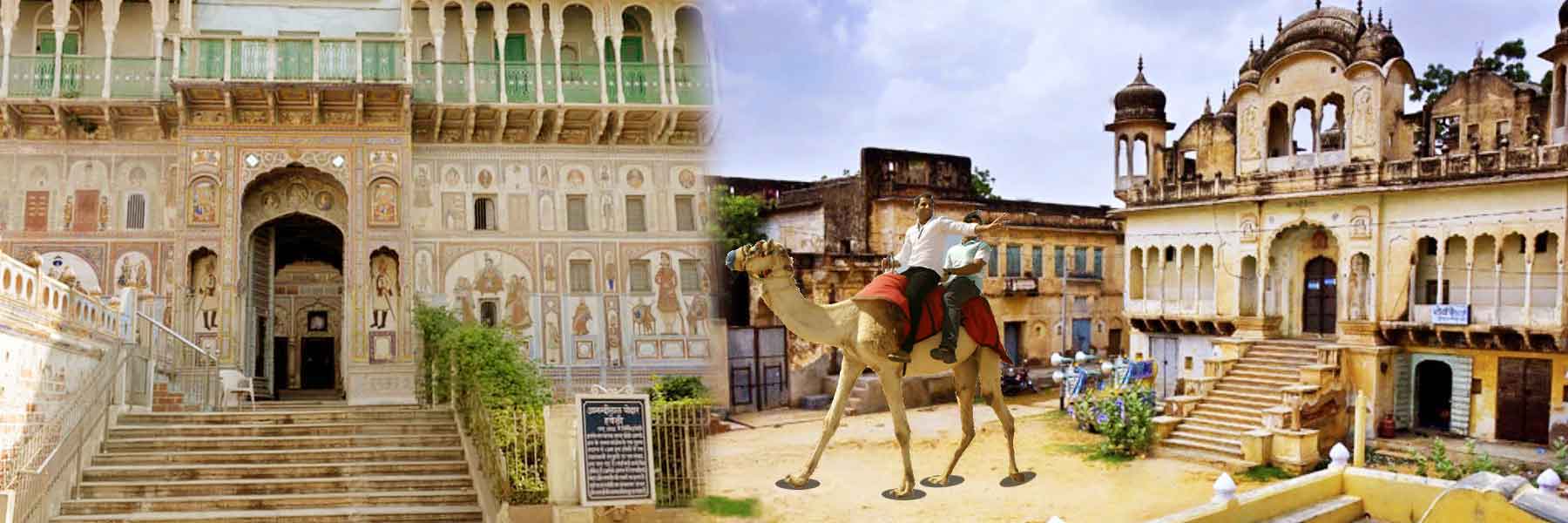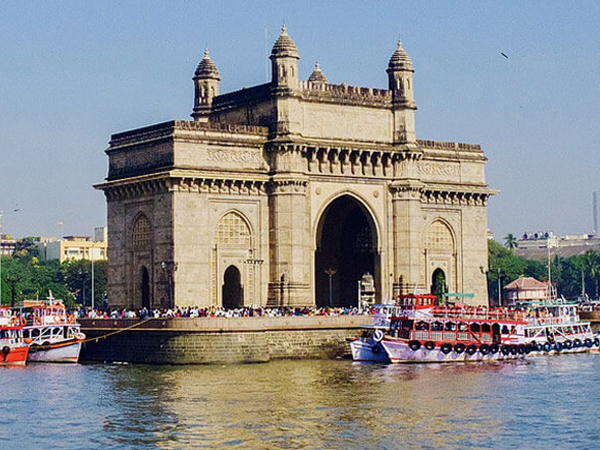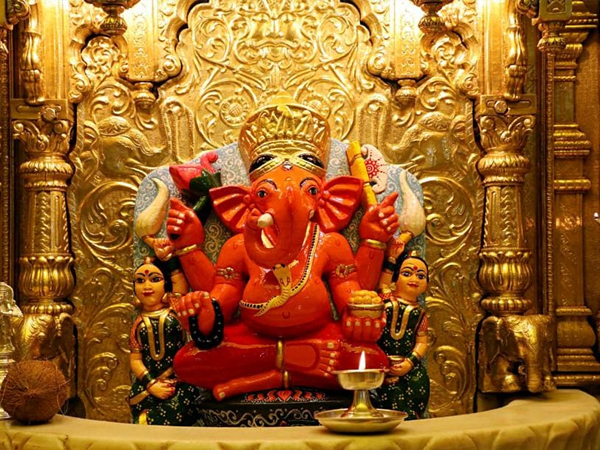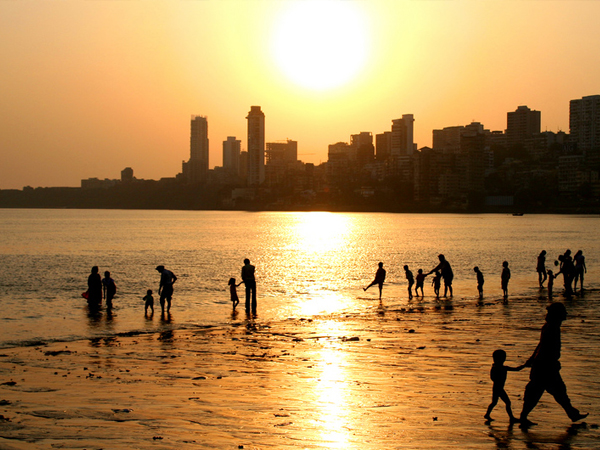The Shekhawati region comprises Jhunjhunun, Sikar and Churu districts of Rajasthan. This unique semi-arid region is also known as the open-air art gallery’, as no-where else one may come across such a profusion of exquisite wall paintings. The entire region teems with magnificent Havelis, temples, cenotaphs, wells and forts adorned with fine frescoes. Until the 1820s, most of the frescoes were financed by the Rajput chieftains, which depicted themes from religion, folk heroes, historical events, etc. By the late 19th century the Marwari business community, which had acquired lots of fame and wealth became the chief patrons of this art.
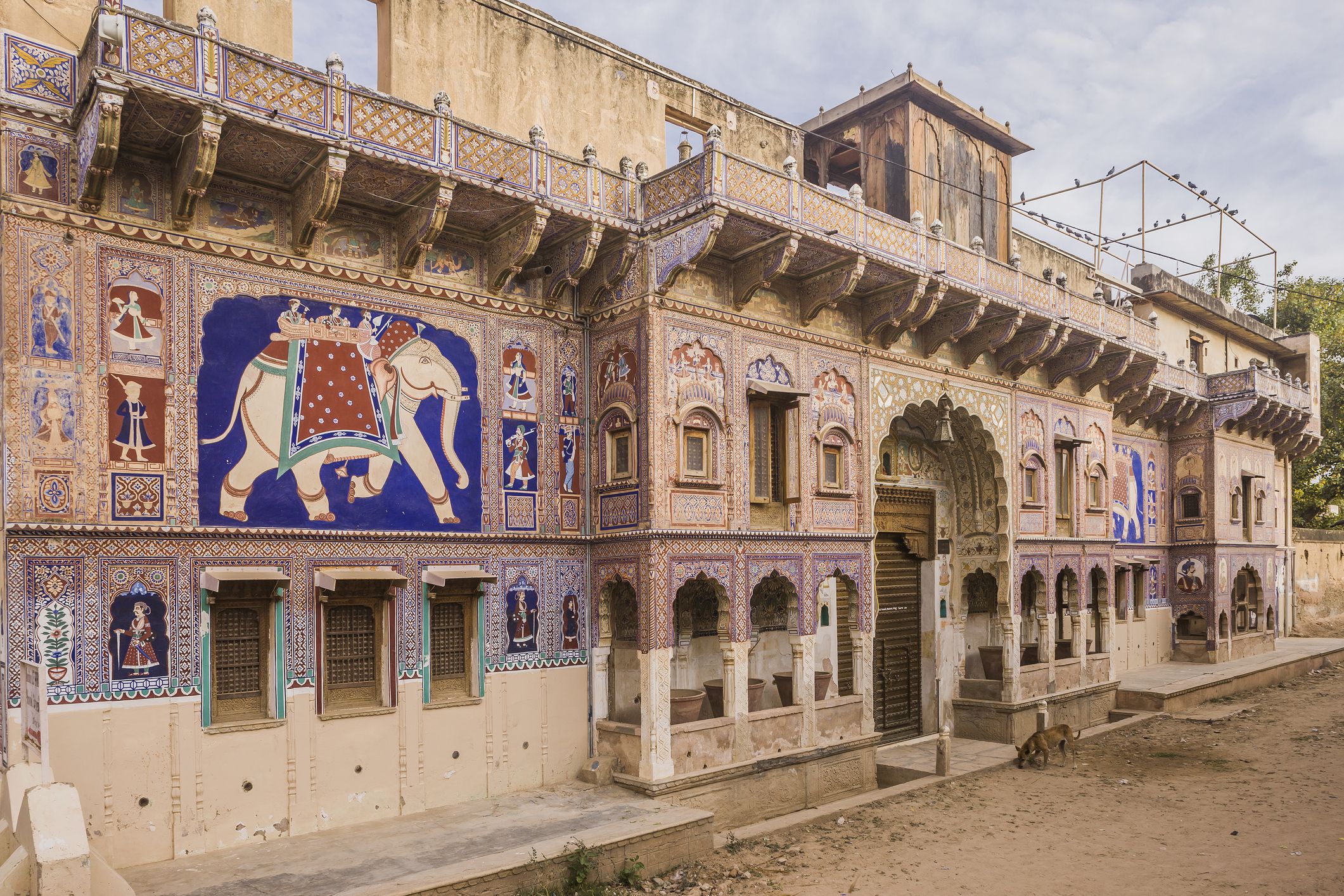 Sikar: It was once the largest thikana (feudatory state) under the Jaipur State. The town surrounded by a wall is studded with palatial mansions and magnificent temples noted for their beautiful wall paintings. The temples of Gopinath, Raghunath, and Madan Mohan and the unique Biyani Haveli are of special interest.
Sikar: It was once the largest thikana (feudatory state) under the Jaipur State. The town surrounded by a wall is studded with palatial mansions and magnificent temples noted for their beautiful wall paintings. The temples of Gopinath, Raghunath, and Madan Mohan and the unique Biyani Haveli are of special interest.
Nawalgarh: This home of country’s leading business tycoons have Havelis adorned with some of the finest frescoes of Shekhawati. There are also two forts and a palace hotel. The beautiful temples with fine wall paintings are also worth visiting
Fatehpur: It was founded in the 15th century by Fateh Khan and has some of the finest Havelis of the region. The best known are the Goenka, Singhania, Devra, Jalan, and Bharatiya.
Dundlod: Famous for its fort, palace, and the Goenka Havelis. It was founded in the early 19th century by Raja Lachhman
Lachhmangarh: It was founded in the early 19th century by Raja Singh of Sikar. One of the best forts of the region and the Ganeriwala or Char Chowk Haveli can be seen here.
Mandawa: This 18th-century town predominated by a medieval fort and rugged hills. The important Havelis are, the Chokhani, Ladia, and Saraf.
Jhunjhunun: It was the capital of Shekhawati and is now the largest town in the region. The town has a number of artistically painted Havelis. Other towns worth visiting for their frescoes are Ramgarh, Pilani, Khetri, Bissau, Churu, and Mahansar, etc.